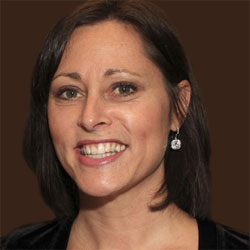By Mary Brune, Co-founder of Making our Milk Safe (MOMS).
Originally published for Generation Green, the blog for the Center for Environmental Health, on January 20th, 2011.
 On my way into work last Friday I heard a story on NPR about a UCSF study that found dozens of toxic chemicals in the bodies of pregnant women. I’ve written before about the vulnerable environment of the womb, and while I’m not surprised by the findings of this latest report, its release struck a nerve nonetheless. You see, until the previous day, I had been a pregnant woman. In the first trimester with what would have been my third child. Losses happen and they occur far too frequently and impact far too many women.
On my way into work last Friday I heard a story on NPR about a UCSF study that found dozens of toxic chemicals in the bodies of pregnant women. I’ve written before about the vulnerable environment of the womb, and while I’m not surprised by the findings of this latest report, its release struck a nerve nonetheless. You see, until the previous day, I had been a pregnant woman. In the first trimester with what would have been my third child. Losses happen and they occur far too frequently and impact far too many women.
The worst part, perhaps, is not having an answer as to why they happen. I took all the necessary precautions: cut out alcohol, coffee, ate well, exercised, and took prenatal vitamins. As far as monitoring what went into my body, I did everything right. What I couldn’t control, however, was the likely presence of toxic chemicals already in my body. Chemicals like pesticides, flame retardants, BPA, all of which are known to affect reproduction. Chemicals that could have interfered with my pregnancy.
While I can’t say for sure that there was a causal relationship between my own chemical exposures and the loss of this pregnancy, I also can’t be sure that there wasn’t. The truth is, I’ll never know. But I’ll always wonder, and I shouldn’t have to.
While I can’t say for sure that there was a causal relationship between my own chemical exposures and the loss of this pregnancy, I also can’t be sure that there wasn’t.
I’m sharing this very personal story because pregnancy loss—and its potential causes— is a subject that people don’t talk about enough. It’s easy to explain away these early losses as simple bad luck, when we need, instead, to be highlighting the connections between environmental exposures and negative reproductive outcomes.
It’s quite an emotional ride to go from a positive pregnancy test to a bloody bathroom stall. I would guess that even the most rational of women, the ones who wait to share news of their pregnancies until the most risky period is over, find themselves daydreaming about this new life they carry. I certainly did. I imagined future camping trips, visits with the grandparents, building sandcastles on the beach. And in the space of a few minutes, all of those feelings of anticipation, hope, and happiness were replaced with feelings of emptiness, deep grief, and anger.
A few days have passed since the incident. In that time, the sharp edges of the loss have become blunted. That’s not to say that this loss will be easily wiped away and forgotten. It won’t. I will carry it with me forever. It has become one more thread in the fabric of who I am. The next time I’m sitting in a doctor’s office filling out forms and I’m asked for an accounting of my reproductive history, I will now write 3 in the box for miscarriage. This loss, this period of grief, has become a dot on the timeline of my life.
I don’t want to linger too long, however, on thoughts of what might have been. The mother in me wants, instead, to shift my focus to the other stat on the form. Number of live births: 2. My creative, kind, funny, generous, crazy-smart daughter; my tender and tough little boy, full of laughter and surprising passion. The sum of them both causes my cup of maternal blessings to overflow. As unlucky as I am to be among the one in six women who experiences pregnancy loss, I am a thousand times luckier to have two children who are healthy, happy, and who give my life a sense of purpose.
It’s also the mother in me that tells the activist in me that it’s time to get back to work. The UCSF report shines a blazing light on the need for real chemical policy reform in this country. Toxic chemicals have no business being in our wombs.
Efforts to reform the outdated Toxic Substances Control Act (TSCA) have stalled in Congress, and there are indications that a new bill, one written by the chemical industry, will rear its head sometime this session. We expect the true origins of the bill to be well hidden, under the guise of having “grassroots support”. Don’t be fooled. For the real details on the bill, look to trusted sources like The Center for Environmental Health (CEH), and the Safer Chemicals, Healthy Families coalition.
Let’s be proactive. Contact your member of Congress, tell them you want real chemical policy reform, right now. Take ten minutes to write a “snail mail” letter to your representatives. The feedback we hear is that in terms of its influence, one personally written letter carries the weight of hundreds of emails.
It’s time for all of us to take this issue personally.
# # #
As the MOMS Project Director with CEH, Mary Brune is responsible for engaging parents in CEH campaigns, and conducting outreach to parents about environmental health issues that impact their families. As co-founder of Making Our Milk Safe (MOMS) in 2005, Mary has been an outspoken advocate for environmental health. She has written about toxic chemicals for The Huffington Post and Mothering magazine and has been featured in two recent books: Not Just A Pretty Face by Stacy Malkan, and The Virtuous Consumer, by Leslie Garrett. In 2009, Mary received the Suzy Cain Leadership award from The Breast Cancer Fund for her work to ban toxic chemicals that contribute to breast cancer. Prior to joining MOMS, Mary worked as a technical writer for the software industry, where she received several awards for her work. She received a B.A. degree in Technical and Professional Writing from San Francisco State University. She lives in Alameda, CA with her husband and two children.



